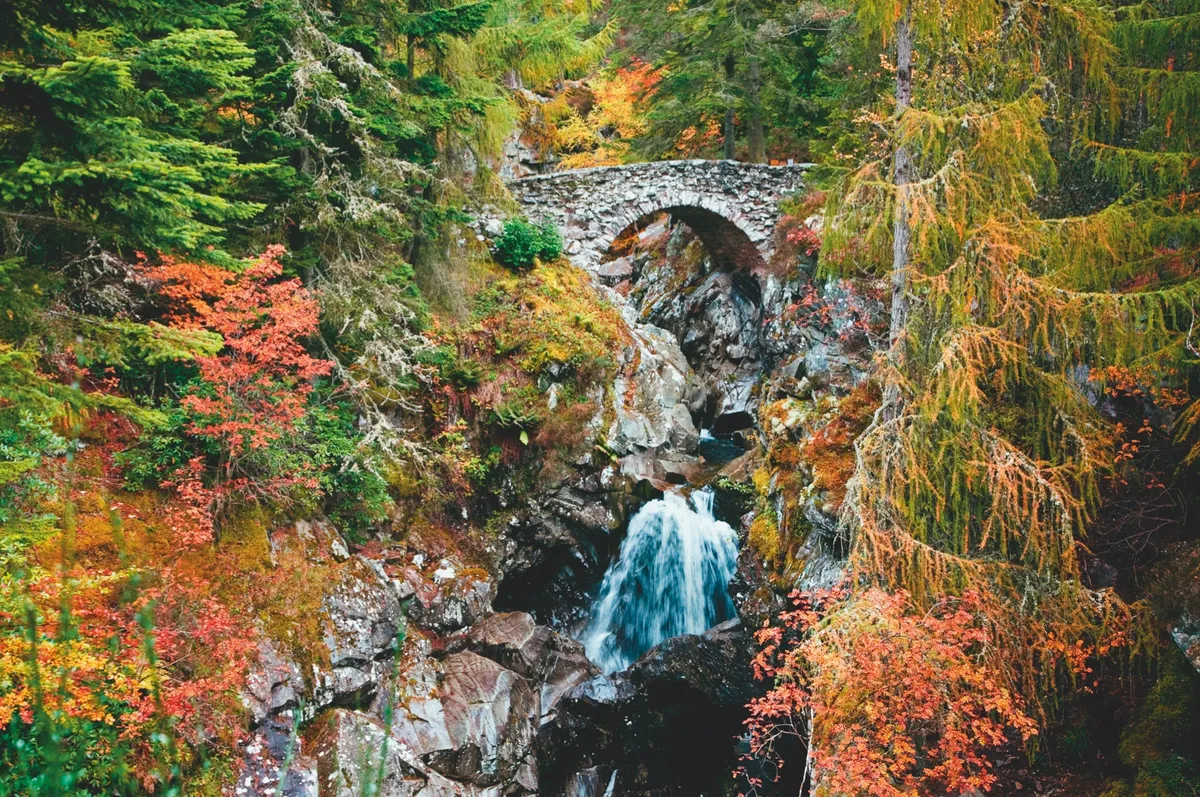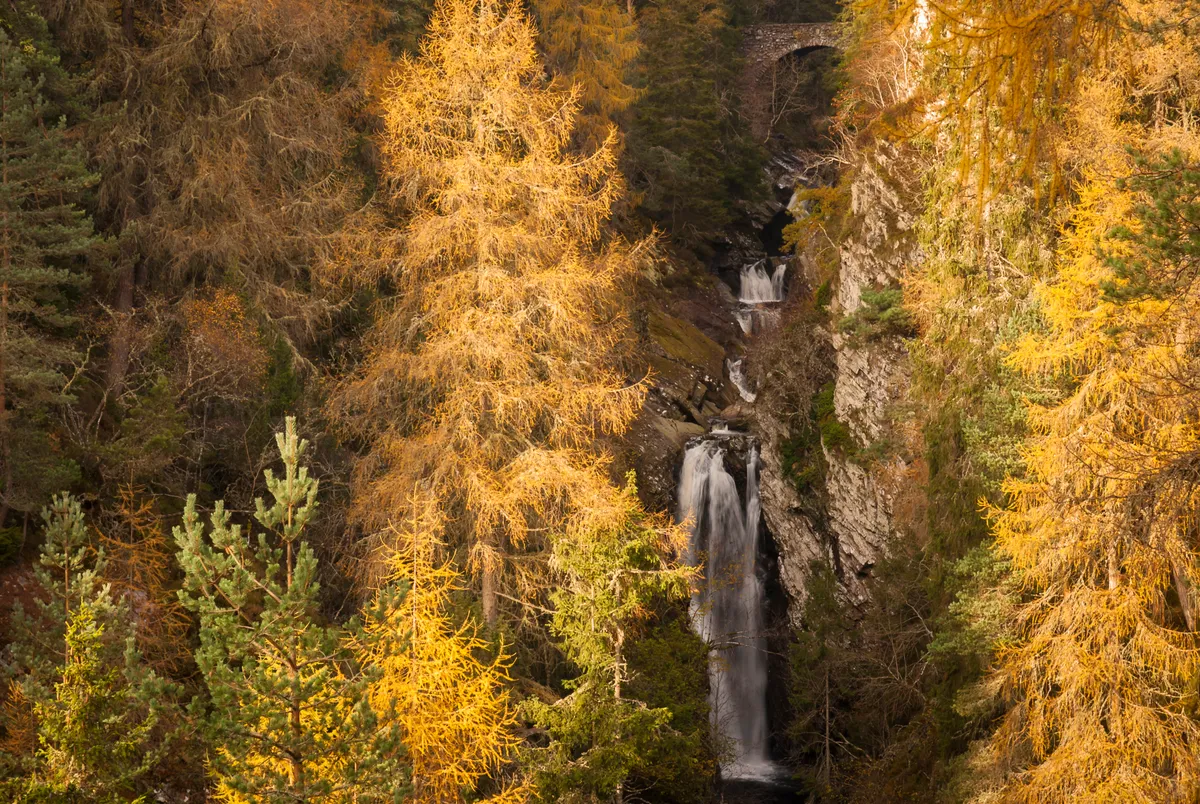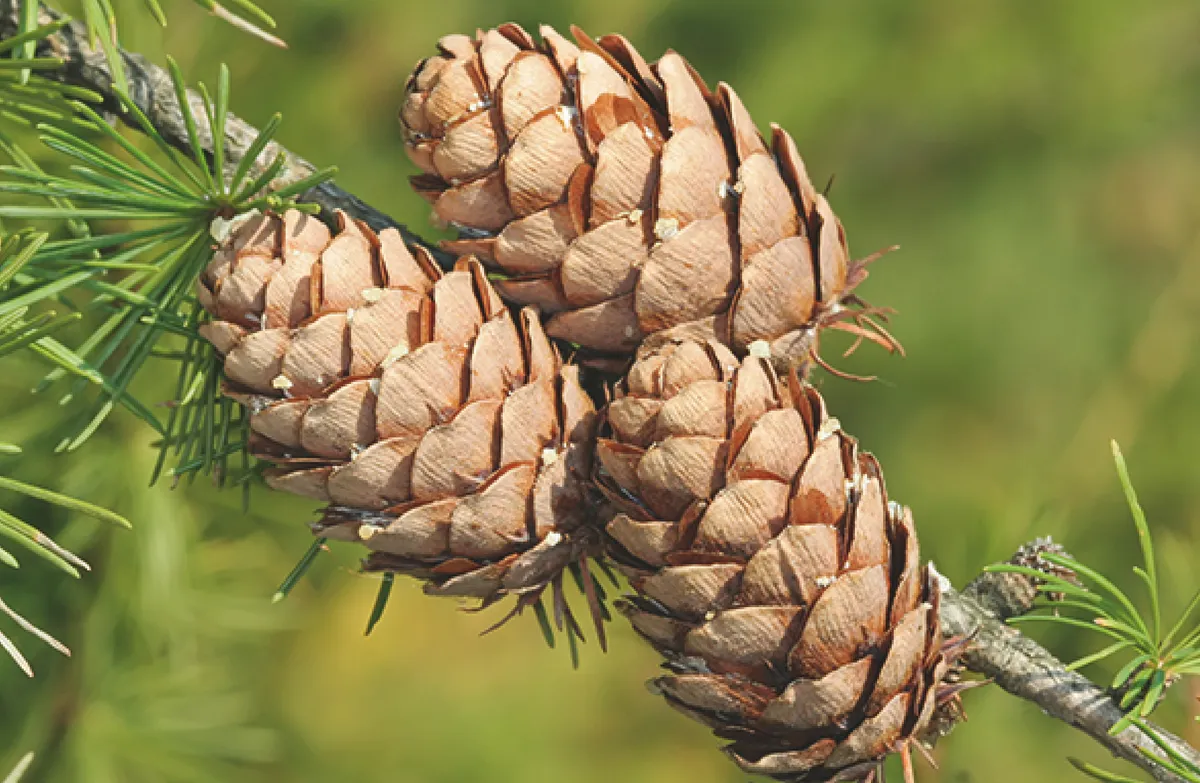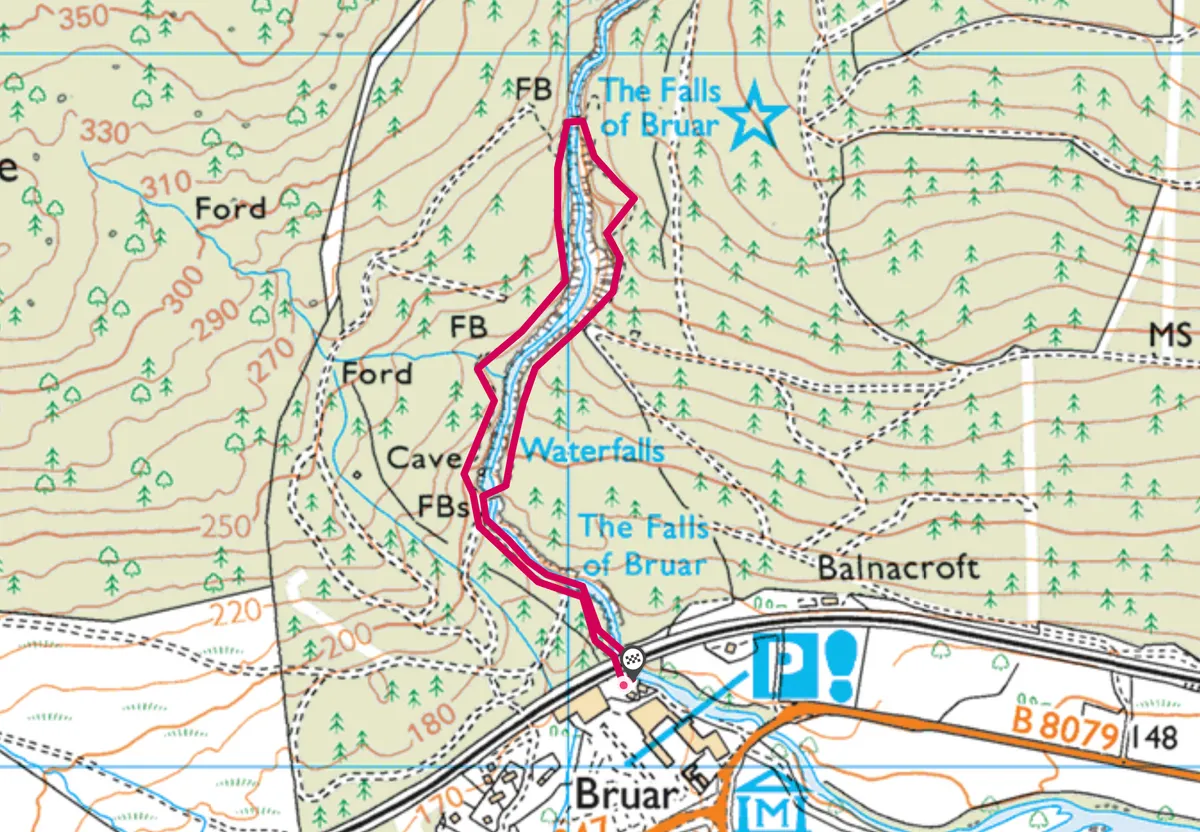The dramatic Falls of Bruar are best observed in wet weather conditions. The Cairngorms moors and mountains harness the fallen rain, soak it up like a gargantuan sponge, then, by unseen energies, force it up though the surface of the ground in the form of bubbling streams.
The Bruar Water, just north of Blair Atholl, oozes from the soggy plateaux and moors of the great Atholl Deer Forest and flows gently down the empty miles of Glen Bruar before changing character completely.
As the ground falls away, the waters become increasingly agitated and turbulent, before crashing and thundering down a deep gorge. At the foot of the gorge the water roars over a series of falls and cascades, before surging through a natural arch in the rock and into the pools below.

The Falls of Bruar through history
The river is at its finest during and immediately after periods of heavy rain, and you could do worse at this time than put on your waterproofs and visit the aquatic power of the Falls of Bruar. What makes the scene so spectacular is the simple combination of rock, water and, most importantly, trees, the basic elements that offer grandeur on a magnificent scale.
However, in the late 18th century this narrow glen was virtually devoid of trees. One visitor to the falls, William Gilpin commented:
“One of them indeed is a grand fall, but it is so naked in its accompaniments that it is of little value.”
Robert Burns, Scotland’s National Bard, agreed with William Gilpin. Following a visit in 1787 he wrote The Humble Petition of Bruar Water to the Noble Duke of Atholl. This 11-verse poem contains the lines:
“Would then my noble master please, To grant my highest wishes? He’ll shade my banks wi’ tow’ring trees, And bonnie spreading bushes.”

Replanting the Falls of Bruar
Much to his credit, the Fourth Duke of Atholl acquiesced and the first trees were planted in 1797.
Sadly, the Bard died before the plantations grew, but others have left their impressions in words and pictures – William Wordsworth, Queen Victoria, William Turner and thousands of other appreciative visitors from home and abroad.
You may also like:
The Fourth Duke of Atholl Lord John Murray’s ambitious planting scheme would eventually include 120,000 larch and Scots pine. In time, Planter John, as he became known, was to plant over 15 million trees throughout his estates, many of which, today, create an unbridled display of golden glory during the months of September, October and November.
Many of Planter John’s original trees were cut down during World War II, but once hostilities were over, the trees were replanted. Scots pines are the most dominant, mixed with mountain ash, willow, aspen and birch.

Falls of Bruar walk
1.2 miles/2km | 1 hour | moderate
1. Follow your ear
You only have to walk for a few minutes from the car park near the busy A9 before you hear the water roar.
2. Water-worn
Gaze down on the peat-brown river as it gushes under Lower Bridge – the power and vitality of the water is almost frightening. As the thundering cataract gouges its way through the tight, narrow gorge, surging, rumbling and roaring over the water-worn rocks of the riverbed, you can almost feel the old stone bridge vibrate. Beyond the stone arch, the footpath climbs steadily uphill.
3. Gaining Perspective
Upper Bridge forms a man-made arch across the top of the gorge. Look down on the river from this high vantage point, no less spectacular than Lower Bridge, and it is easy to understand how, over the aeons, the river has been able to carve its deep recess into the very bedrock of the land.
4. Sounds of autumn
From Upper Bridge the path climbs away from the water – the primeval roar of rutting red deer above in Glen Banvie filling the air – before sweeping round to begin its long descent back to Lower Bridge.
“The blackbird strong, the lintwhite clear,
The mavis mild and mellow;
The robin pensive Autumn cheer,
In all her locks of yellow.”
The Humble Petition of Bruar Water by Robert Burns
Falls of Bruar map
Falls of Bruar walking route and map

